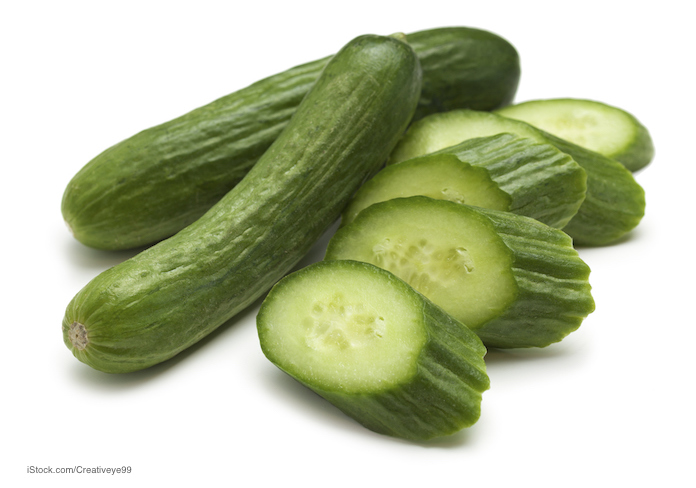The Centers for Disease Control and Prevention issued information about a Salmonella Oslo outbreak linked to Persian cucumbers this week in its Morbidity and Mortality Weekly Report. But the outbreak happened eight months ago.

Public health officials in Minnesota and Michigan started an investigation when four people were sickened with Salmonella Oslo infections that occurred March 21 to April 9, 2016. A total of 14 people in 8 states were identified as being part of this outbreak at the end of the investigation. Whole genome sequencing and pulsed gel-electrophoresis identified the outbreak strain of Salmonella Oslo, which was new to the PulseNet database.
Epidemiologic evidence found that Persian cucumbers were the source of infections in this outbreak. Persian, or “mini” cucumbers are small and seedless with smooth skin. The cucumbers were purchased from a single grocery chain that was not identified in the report.
This is the fourth multistate outbreak of Salmonella infections associated with cucumbers since 2013. Salmonella outbreak associated with cucumber have been increasing in number every year since 2010. The CDC report states, “further research is needed to understand the mechanism and factors that contribute to contamination of cucumbers during growth, harvesting, and processing to prevent future outbreaks.”
The median age of patients in this outbreak was 36 years. Three of the patients in this outbreak were hospitalized. Only about 25 cases of Salmonella Oslo infections are reported to officials every year in the United States.
The investigation found two Canadian Persian cucumber suppliers that were in the timeframe of interest, but officials could not identify a single growers. The growers who could have supplied the cucumbers were in Canada, Mexico, and the Dominican Republic.
Cucumber samples were collected from the point of sale, from patient’s homes, and from one of the Canadian suppliers about 1 month after the patients purchased them. No cucumbers tested positive for Salmonella. This highlights one of the problems investigators encounter when investigating outbreaks in produce. The typical shelf life of cucumbers is less than a week. And since it takes time for a person to get sick, go to the doctor, and have test results, these foods are usually discarded before they can be collected for testing.
The symptoms of a Salmonella infection include nausea, vomiting, diarrhea that may be bloody, fever, and abdominal cramps. These symptoms usually begin six to seventy-two hours after exposure to the pathogenic bacteria. Most people recover on their own, but some become so sick they must be hospitalized.




